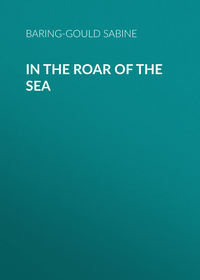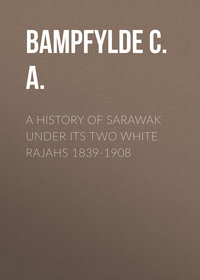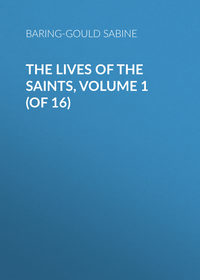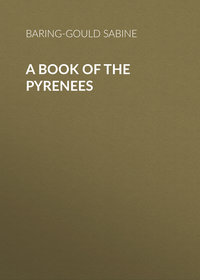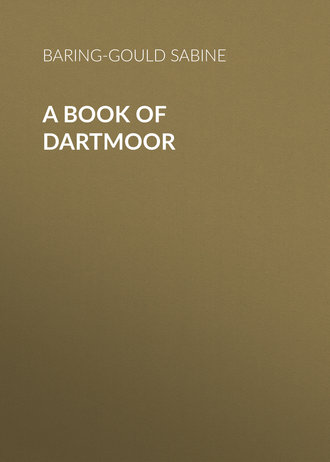 полная версия
полная версияA Book of Dartmoor
To him who wanders over the moor, and looks at the flowers at his feet, some day comes the proud felicity of lighting on the white heath – and that found ensures happiness. And I, as I make my congé, hand it to my reader with best wishes for his enjoyment of that region I love best in the world.
1
"Dartmoor," in the Transactions of the Plymouth Institution, 1897-8.
2
The Welsh twr is a tower; twrr, a heap or pile. From the same root as the Latin turris.
3
Collier, op. cit.
4
Hardwicke's Science Gossip, 1871, p. 123.
5
"Hardly had we descended the narrow path, when we saw before us several huge stones, like enormous boulders, placed endways perpendicularly, on the soil, while some of them yet upheld similar masses, laid transversely over their summit. They were arranged in a curve once forming part, it would appear, of a large circle, and many other like fragments lay rolled on the ground at a moderate distance; the number of those still upright was, to speak by memory, eight or nine. Two, at about ten or twelve feet apart one from the other, and resembling huge gateposts, yet bore their horizontal lintel, a long block laid across them; a few were deprived of their upper traverse, the rest supported each its headpiece in defiance of time and the more destructive efforts of man. So nicely balanced did one of these cross-bars appear, that in hope it might prove a rocking-stone, I guided my camel right under it, and then, stretching up my riding-stick at arm's length, could just manage to touch and push it; but it did not stir. Meanwhile the respective heights of camel, rider, and stick, taken together, would place the stone in question full fifteen feet from the ground. These blocks seem, by their quality, to have been hewed from the neighbouring limestone cliffs and roughly shaped, but present no further trace of art, no groove or cavity of sacrificial import, much less anything intended for figure or ornament. The people of the country attribute their erection to the Dārim, and by his own hands too, seeing that he was a giant. Pointing towards Rass, our companions affirmed that a second and similar stone circle, also of gigantic dimensions, existed there; and, lastly, they mentioned a third towards the south-west, that is, in the direction of Henakeeyah." – Palgrave, Narrative of a Year's Journey through Central Arabia, 1865, vol. i p. 251.
6
Archæologia, vol. 1. Pl. 2 (1887).
7
Keeting History of Ireland (ed. O'Connor, Dublin, 1841), i. P. 293.
8
Merrivale Bridge, Har Tor, and Longstone, near Caistor Rock.
9
Querns have been found, but none in prehistoric habitations.
10
This was done at Manaton at every funeral, the only difference being that he was carried round and round the cross. A former rector, Rev. C. Carwithen, destroyed the cross so as to put a stop to this practice.
11
Archæologia Cambrensis, July, 1899. The camp was excavated by Colonel W. L. Morgan.
12
Archæologia, vol. lvi. part 2, 1899.
13
Dartmoor Pictorial Records, 1893.
14
Silva Gadhelica, ii. p. 271.
15
Hist. Eccl., iii. c. 23.
16
Belliver is a modern contraction of Bellaford, as Redever is Redaford.
17
See my article on "Foundations" in Strange Survivals (Methuen and Co., 1892). See also my Book of the West, i. p. 331.
18
Crossing, Ancient Crosses of Dartmoor, p. 15.
19
I have told her story in full in Historic Oddities and Strange Events. Methuen and Co., 1889.
20
This is the scene chosen by me for my story Guavas the Tinner.
21
I have given it, with the original air, in the Garland of Country Song. Methuen.
22
Slightly curtailed from W. F. Collier, Country Matters in Short. Duckworth, London, 1899.
23
I have been informed that the Jack-o'-lantern is only to be seen after a hot summer, at the end of July, and in August and September. As the moormen say, "When the vaen rises," i. e. when there is fermentation going on in the fen or vaen.
24
I have had to considerably tone down the original, which was hardly presentable if given verbatim.
25
"The Lichen Flora of Devonshire," in Transactions of the Devonshire Association, 1883.
26
Given in A Garland of Country Song. Methuen, 1895.
27
E. A. S. Elliot, "Birds in the South Hams," Transactions of the Devonshire Association, 1899.
28
Dartmoor Idylls. Methuen, 1896.
29
Yet there is the Devonshire white ale – the composition of which is a secret – that is still drunk in the South Hams, and in one tavern in Tavistock. It is a singular, curdy liquor, in the manufacture of which egg is employed. Is heath used also? Qu en sabe?


